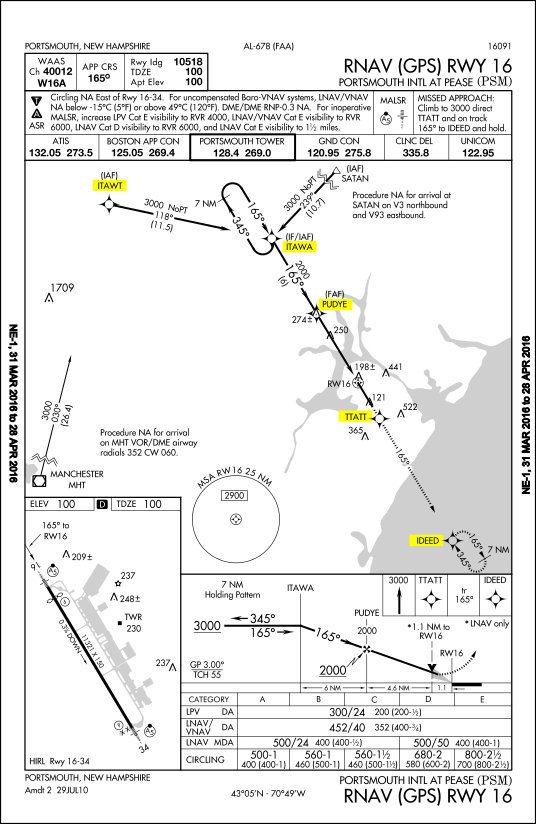

Communication is not necessarily guaranteed with MEA compliance.The minimum en route altitude (MEA) ensures a navigation signal strong enough for adequate reception by the aircraft navigation (NAV) receiver and obstacle clearance along the airway.When the AeroNav Products en route chart is unfolded, the legend is displayed and provides information concerning airports, NAVAIDs, communications, air traffic services, and airspace.The en route charts are revised every 56 days.Information concerning MTRs is also included on the chart cover.The effective date of the chart is printed on the other side of the folded chart.Also noted is an explanation of the off-route obstruction clearance altitude (OROCA).Cities near congested airspace are shown in black type and their associated area chart is listed in the box in the lower left-hand corner of the map coverage box.When folded, the cover of the AeroNav Products en route chart displays an index map of the United States showing the coverage areas.The IFR low altitude en route chart is the instrument equivalent of the sectional chart.To effectively depart from one airport and navigate en route under instrument conditions, a pilot needs the appropriate IFR en route low-altitude chart(s).Established jet routes from 18,000' MSL to FL 450 use NAVAIDs not more than 260 NM apart.Information includes the portrayal of Jet and RNAV routes, identification and frequencies of radio aids, selected airports, distances, time zones, special use airspace, and related information.En route high-altitude charts provide aeronautical information for en route instrument navigation at or above 18,000' MSL.AeroNav Products maintains and produces the charts for the U.S.Your ability to fly instruments safely and competently in the system is greatly enhanced by understanding the vast array of data available to the pilot on instrument charts.The objective of IFR en route flight is to navigate within the lateral limits of a designated airway at an altitude consistent with the ATC clearance.Read the course on the compass that is aligned with the arrow on the plotter that is aligned with the drawn course line. Rotate the compass until the north arrows are parallel to the lines of longitude on the sectional chart. Position the plotter’s straight edge on the drawn course line. The reciprocal course, 220°, is a southwesterly course, and would be the true course if we were fly from Cooperstown Airport to Jamestown Airport. A true course of 040° is a northeasterly course. In this example, we are flying from Jamestown Airport to Cooperstown Airport, which is a northeasterly direction. Look at the top of the compass arc and interpret the true course that is in the direction of flight. Position the center hole (grommet) over a line of longitude and the drawn course line, and align the plotter with the course line. Study the examples below using the fixed plotter or rotation plotter. Using the lines of longitude on the sectional course as a reference to true north, determine the true course between the departure and destination airports. In this case the distance between Jamestown Airport and Cooperstown Airport is 36.5 nautical miles (NM). Line up the start of the nautical mile sectional scale with your departure airport and read the mileage to your destination airport. In this example, we’ll plot a course from Jamestown Airport to Cooperstown airport. Lay the straight edge of the plotter on the sectional chart across to your departure and destination airports, or checkpoints if the route exceeds the plotter’s edge. You’ll need to use the scale printed on the excerpt to accurately measure distance. Be forewarned these sectional chart excerpts are not to scale. We’ll use a sectional chart excerpt that is depicted in Figure 27 of the FAA’s Airmen Knowledge Test Supplement for Sport, Recreational and Private Pilot.

We’ll typically only be using the nautical mile sectional chart scale be careful to ensure that you are reading this scale when measuring distances. The most common used in VFR navigation is the sectional plotter, which typically will enable you to measure nautical miles and statute miles on both sectional charts and world aeronautical charts (WAC). There are many types of navigation plotters.


 0 kommentar(er)
0 kommentar(er)
